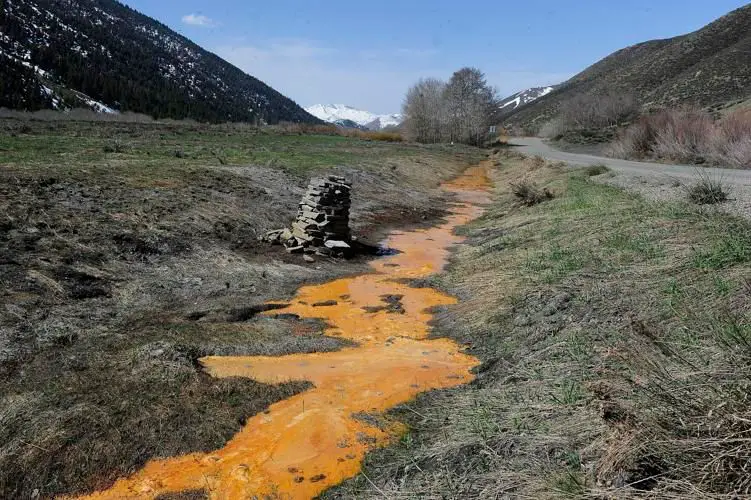Can You Turn Mud Into Clay?
What is Clay?
Clay is a fine-grained natural material composed primarily of hydrated aluminum silicates and other minerals. It is plastic when wet and develops a hard, rock-like consistency when fired at high temperatures.
Some key properties of clay include:
- Fine particle size – Clay particles are typically less than 2 micrometers in size, which gives clay its unique properties.
- Plasticity – Clay can be molded when wet, allowing it to be shaped into objects like pottery. As it dries, it retains its shape.
- Hardens when fired – Firing clay at high temperatures causes the material to become permanently hard through sintering and vitrification.
- Absorbent – The fine particles of clay have high surface area and can readily absorb water.
- Bind together when wet – Clay particles develop an electrostatic surface charge when wetted which causes them to stick together.
Due to its abundance, workability, and hardening when fired, clay has been used for millennia to create pottery, tiles, bricks, figurines, pipes, and many other objects. When mixed with water, sand, and organic matter, it can form the basis of materials like adobe, cob, and clay plaster used in construction.
What is Mud?
Mud is a thick, soft, and wet mixture of soil, water, and other materials such as clay, silt, sand, or organic matter. It occurs when sediment is suspended in water, creating a substance with a sticky consistency. The amount of water, soil composition, and other additives determine the viscosity and texture of mud.
The main components of mud are:
- Water – Provides the fluid base for mud.
- Clay – Extremely fine-grained soil that gives mud its plasticity.
- Silt – Fine granular sediment that makes mud feel smooth.
- Sand – Adds gritty texture to mud.
- Organic matter – Decaying plants enrich mud.
While mud contains clay, the two substances differ in their composition and uses. Clay has much higher clay mineral content than mud, giving it increased malleability, dry strength, and stability for forming pottery, bricks, and art. Mud is a general, informal term for wet soil, not meeting the specific mineralogical properties of clay.
Can All Mud Be Turned into Clay?
Not all mud can be turned into clay. There are several key factors that determine if a particular mud deposit has the right properties to be transformed into clay:
Particle Size – Clay particles are very small, less than 0.002mm in diameter. Mud with larger particle sizes lacks the fine texture to become clay.
Mineral Composition – Clay is made of hydrous aluminum phyllosilicates, a class of minerals that form microscopic plate-like structures. Mud without these minerals cannot be converted into clay.
Organic Matter – Too much organic material like decaying plant matter in mud will prevent it from becoming clay. The organics must be washed out or decomposed first.
Water Content – Mud that is too waterlogged lacks the proper chemistry and consistency to be transformed into clay. The water must be drained or evaporated away.
The most common types of muds that can be turned into clay are marine muds found in seabeds, lakebeds, and river deltas that have the right particle sizes and mineralogy. Mudstone and shale are also prime candidates if they weather and erode into mud. Organic plant-rich swamp muds and mud containing course sand cannot readily be converted into clay.
How to Turn Mud into Clay
Turning mud into usable clay requires carefully drying and then grinding the mud into a fine powder. This removes water and breaks down any organic materials or rocks. The mud should then be screened through a fine mesh or sieve to filter out remaining pebbles, roots, and other debris.
After the mud is dried and finely ground, the clay powder can be mixed with water again to reach an ideal consistency. At this stage, the clay is ready to be shaped or molded as desired. Potters will wedge or knead the clay on a flat surface to press out any air bubbles and make the material smooth and elastic.
Once shaped into pottery, sculptures, bricks, or tiles, the clay objects must be fired in a high temperature kiln or oven to permanently set their form. Firing clay hardens it by changing the mineral structure and removing any remaining water. The final result is a sturdy ceramic material that will hold its shape without deforming.
With proper processing, most muds contain clay minerals that can be extracted and purified into high quality clay for art, construction, or industrial uses.
Clay Formation in Nature
Clay mainly forms naturally from the chemical weathering of rocks over long periods of time. The feldspar and mica minerals within igneous, sedimentary and metamorphic rocks gradually break down through hydrolysis when exposed to weak acidic water. This releases aluminum, silicon and oxygen ions that combine to form clays.
The resulting clay particles are very tiny, averaging around 2 microns in size. This allows them to be transported long distances by rivers, glaciers and ocean currents. Gentle flowing water allows the clay particles to settle out of suspension and accumulate in still bodies of water like lakes, wetlands and the sea floor. Over time, thick layers of clay deposits form through this process of sedimentation. Subsequent burial and compaction transforms these soft sediments into sedimentary rock layers of shale and mudstone which are rich in clay minerals.
Mountain building events later expose the shale and mudstone at the earth’s surface once again. Here, weathering by rain, ice and wind erodes the rocks back into clayey soils. This cyclical process means clay is continually being produced around the world through the breakdown and redeposition of existing rocks.
Importance of Clay
Clay is an important material that has been used for centuries in a variety of applications. The unique properties of clay make it well-suited for crafting pottery, bricks, ceramics and more. Clay also plays a vital role in agriculture and construction. However, clay mining and use does have some environmental impacts that must be considered.
Pottery is one of the oldest uses of clay. Clay can be shaped when wet and turned into beautiful and functional objects after firing in a kiln. The types of clay used and the temperatures clay is fired at determine its final strength and other properties. Bricks and other construction materials also rely on clay as their base component.
Ceramics manufacturing depends on clay for products like tiles, porcelain, and enamels. The malleability, durability, and heat resistance of clay make it idea for these applications. Clay is also a critical component of Portland cement.
In agriculture, clay helps retain nutrients and water in soil. However, too much clay can lead to drainage issues. Clay particles also help bind and support foundational structures.
While clay is very useful, clay mining and decomposition can release toxins. Producing ceramics and firing clay also releases pollutants. However, recycling clay can help reduce environmental impacts and waste. Overall, clay is an abundant resource that will continue to be important despite some drawbacks.
Geographic Locations of Clay Deposits
Clay deposits can be found all over the world. Some of the major clay deposits are located in regions known as clay belts. The largest clay belt is located in North America and stretches from Virginia to Alabama in the United States and into New Brunswick and Nova Scotia in Canada. This clay belt contains huge deposits of kaolin clay that are mined extensively for commercial use.
Other significant clay deposits are found in the Amazon basin in Brazil, central Africa, and in various parts of Asia including China, Thailand, and India. The types of clay found in these deposits include ball clays, bentonites, fire clays, common clays, and specialty clays like kolin and attapulgite. The specific properties and mineral content of the clays vary based on the geographic location and local geology where they are found.
For example, kolin clays known for their whiteness and fine particle size are mined in large quantities from the kaolin clay belt in the southeastern United States. Bentonite clays that swell when wet and have excellent absorption properties are found in deposits stretching from the western United States into Canada. Identifying the unique types and properties of clays from major deposits around the world is key for determining their potential commercial uses.
History of Clay Usage
Clay has been an important material for human civilization for thousands of years. The earliest known use of clay was for creating pottery and tools. Archaeological evidence indicates that prehistoric cultures were creatingclay pots and figures as early as 25,000 BC. The oldest known fired clay objects, simple figurines, are from sites in the Czech Republic dating back to 29,000–25,000 BC.
Clay tablets were one of the first means of recording written language. Clay tablets were used widely in Mesopotamia, where cuneiform writing originated around 3500 BC. Clay was also a common material for constructing buildings. The earliest use of clay for constructing buildings was likely in the form of mud bricks, which were made by shaping wet clay and drying it in the sun. Mud bricks allowed for the construction of some of the earliest permanent human settlements.
Over time, clay continued to be an indispensable material. Around 2,500 BC, glazed ceramics and porcelain started to be produced in China. The Industrial Revolution brought about new uses and techniques for working with clay. Clay deposits were mined extensively to produce bricks for buildings and infrastructure. Portland cement was invented in the early 1800s, allowing for the creation of concrete. Concrete revolutionized construction thanks to its strength, durability, and low cost.
Today, clay remains an important industrial and construction material. Clay is used to produce cement, bricks, ceramic tiles and sanitaryware. In the paper industry, clay is used to coat paper. Various specialized types of clay are used as absorbents, catalysts and pharmaceuticals. While many new materials have been invented over the centuries, clay continues to be a versatile, ubiquitous substance vital to modern civilization.
Economics of Clay Mining
Clay mining is a major global industry that involves extracting clay from quarries and pits. Some of the world’s largest producers and exporters of clay are the United States, China, Germany, and Ukraine. In 2020, China produced an estimated 74 million metric tons of clay, accounting for over 25% of global production.
The costs involved in clay mining include land acquisition, excavation equipment, transportation, labor, and environmental mitigation. The price of clay can range widely depending on factors like the type of clay, quality, and location. Prices per metric ton have ranged from around $15-40 for common clays to over $100 for some premium kaolin clays.
While clay mining provides valuable minerals for many products, it can have environmental impacts. Concerns include habitat destruction, dust and noise, disruption of groundwater patterns, and visual blights. Responsible clay mining aims to mitigate these effects through land reclamation and dust control. Overall, clay mining directly contributes billions in economic value while balancing environmental sustainability.
Future Uses of Clay
Clay has a bright future ahead as new technologies and innovations unlock even more potential uses for this versatile material. Here are some exciting developments on the horizon:
Emerging Technologies Using Clay
Researchers are finding new high-tech applications for clay in fields like electronics, medicine, and energy storage. For example, certain clays can act as natural semiconductors for making flexible electronics. Clays are also being studied as drug delivery agents in pharmaceuticals, and as components of new supercapacitor designs for energy storage.
Sustainability Initiatives
The natural properties of clay support sustainability in several ways. As industries look to reduce environmental impacts, clay provides a renewable and abundant resource to replace plastics and other non-biodegradable materials. Bio-based greases, paints, packaging and more can all utilize clay. Processing clays also requires less energy than many other materials.
Innovations in Clay Production
New techniques are enabling more efficient and eco-friendly clay production. For example, extracting clays from oil and gas drilling fluids reduces the waste streams. Processing clays with ultrasound and microwaves can optimize properties while lowering energy usage. Companies are also developing new clay-based composites and hybrid materials.
With cutting-edge research and a focus on sustainability, clay promises to continue enabling key technologies and products for many years to come.




